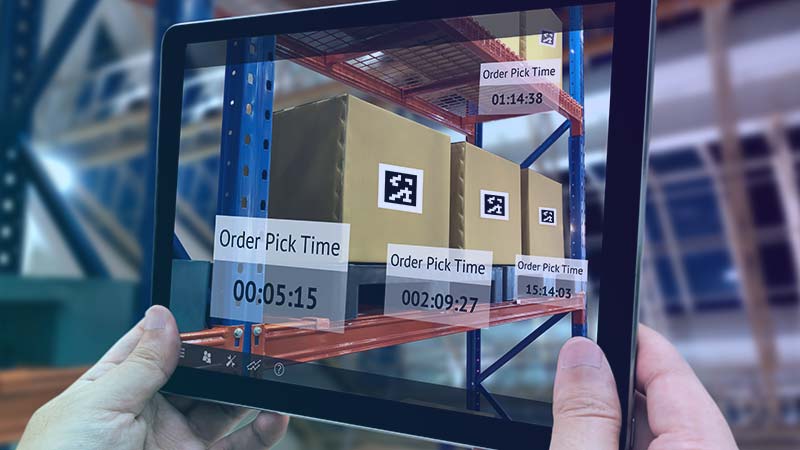SMART LOGISTICS TRACKING CUTS OUT THE MIDDLEMAN AND LEVELS THE PLAYING FIELD FOR MID-SIZED GOODS MANUFACTURERS.
Why should the big guys have all of the fun? When it comes to supply chain management, small and midsized companies often don’t have the resources to build an in-house logistics team like their larger counterparts. But this lack of resources doesn’t take away a company’s need to track and manage mobile assets as they move from factory, to warehouse, to retail location.
Until now, companies that lacked internal logistics teams had to rely on third-party agents to track their mobile assets. While this option is undoubtedly less expensive than hiring internal logistics staff, it still comes with a hefty price tag. Add to this the fact that by contracting with a third-party logistics agent, a manufacturer loses some degree of visibility and control over its own supply chain.
It’s no wonder small and mid-sized goods manufacturers have begun to search for a better way to track their goods. Enter IoT-powered smart logistics tracking. By helping goods manufacturers cut out the middleman, this leading technology is poised to disrupt the global supply chain as we know it.
RFID technology has served the industry well, but it has its limitations. To begin with, RFID tags provide only a limited amount of information. Gathering that information requires a great deal of manpower and leaves considerable room for human error. Combine these shortcomings with the fact that few third-party suppliers and logistics companies located in developing nations are equipped with RFID technology, and it easy to see why today’s global economy needs a better solution for tracking mobile assets.
SMART LOGISTICS SOLUTIONS PROVIDE A COST-EFFECTIVE SOLUTION FOR TRACKING MOBILE GOODS.

So what exactly is smart logistics, and how can it help companies track their own assets? Take a midsized producer of household goods. This company isn’t large enough to need an in-house logistics team, but it still needs a way to track goods as they travel from the factory, to the company’s series of warehouses and finally to retail locations. In the past, the company relied on an expensive, third-party logistics company to manage their flow of goods.
Representing the latest in IoT technology, smart logistics tracking may be just the solution this company is looking for. From a user perspective, smart logistics solutions are fairly straightforward to deploy. A small, battery-powered smart tracking device is securely mounted onto a container, truck or wagon carrying goods. Once mounted, the device collects real-time information about the exact location of those goods at any point along the supply chain and securely transmits that information through Sigfox’s global IoT network. The information is then aggregated on a customized app platform that can be accessed from any smartphone, tablet or desktop computer.
With smart logistics, keeping track of a shipment of goods is no longer a full-time job, requiring a day’s worth of phone calls, emails and a complicated Logistics Information System. Any designated staff member at this small household goods company can access the app dashboard to get a complete picture as to the whereabouts of the company’s mobile assets.
Customized alerts help cut down even further on logistics manpower. If a truck gets stuck in traffic on its way from the warehouse to a retailer, the app platform issues an alert and provides a new estimated arrival time. Likewise, an alert is issued if that truck travels away from a pre-determined route. The same is true for assets traveling by boat, rail or air.
With this level of up-to-the-minute information, even the smallest company can now keep tabs on their own assets. If an event happens along the supply chain, the company is the first to know, allowing managers to quickly correct the problem.
No longer are small companies beholden to outside entities to track their most valuable assets. Smart logistics tracking cuts logistics costs, and gives even the smallest companies visibility and control over their own supply chains. Now that’s a powerful return on investment.
